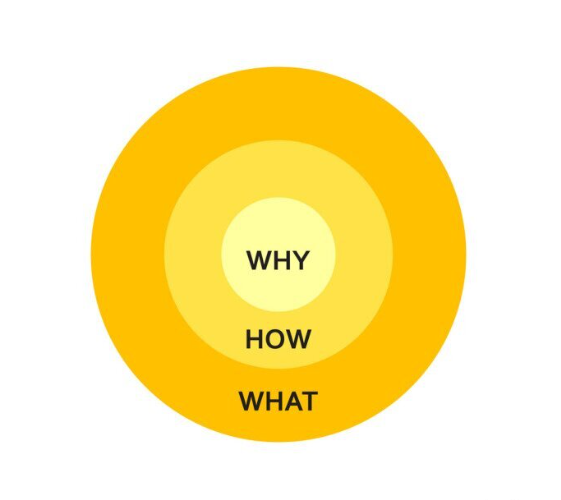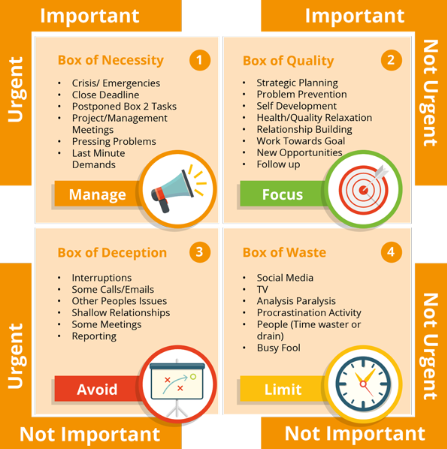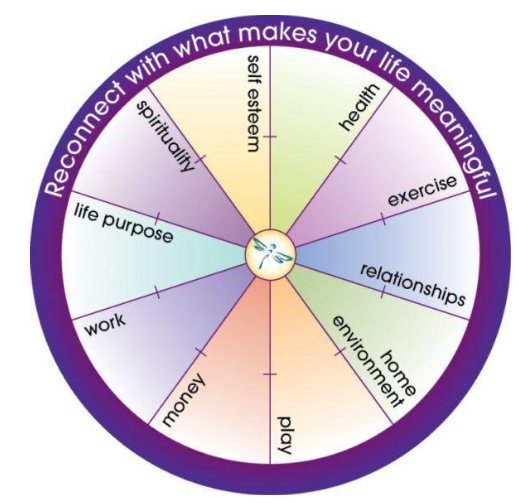Many nonprofit leaders are juggling relationships with boards of directors, building community relationships, fund-raising campaigns, grant writing, managing operations, “filling” in for vacant positions, and ensuring the appropriate provision of services. Meetings, reports, and email overflow into the evening hours with strategic planning and goal execution falling by the wayside.

Borrowing Business Lessons for Nonprofit Leaders
Cathleen Armstead, Ph. D.
How to develop strategic leadership, an effective organization and efficient processes are continual topics in management literature as essential functions that underpin profitability. Nonprofit organization leaders often neglect these “business” functions and limit sustainability.
To become a more effective nonprofit leader, you can borrow these six key business lessons.
Balance leadership and management
Nonprofit leaders first need to balance leadership and management skills. Leadership and management should not be confused. While there may be many similarities, there are some differences. A key challenge for all organizations, but especially for nonprofit organization is the need to strike the right balance between these role requirements.
A leader’s key task is to inspire and motivate. Leaders focus on the big picture, the ideas, the values, the goals, and objectives of the organization. Leaders focus on interpersonal relationships, promoting talent and developing employees and leaders strive to create connection and passion.
Managers maintain daily operations of an organization and create order. Managers work to create systems and processes to ensure compliance – a necessary aspect of a nonprofit organization. In most nonprofit organizations, a director is both leader and manager. Balancing the two opposite, yet complimentary roles is a necessity.
Managers focus on “when” and “how.” Managers ensure the organization is doing things right.
Leaders focus on “why.” Leaders ensure the organization is doing the right thing.
The balance between leadership and management, especially for a nonprofit director is important. Without management, a program’s unstructured and energetic approach may not provide results. Without leadership, programs lack the inspiration and vision to drive it forward.
Leadership with a collaborative focus creates a vision and mission. Leaders understand where the organization is and where the organization is going. Leaders view opportunities and recognize challenges and engage their teams in this vision.

Begin with the Why
This vision begins, according to Simon Sinek, with the “why”. Sinek illustrates this with the golden circle, the “why” in the center surrounded by the “how” and the “what”. Sinek posits that people don’t buy what you do, they buy why you do it. In a nonprofit world, donors donate to your organization, communities connect with your resources, and clients seek your services because of why you do it.
Strategic planning in many nonprofit organizations begins with the mission statement. But often mission statements do not capture that “why” and instead only outline the “what” and “how.”
The following mission statement can be found in multiple nonprofit organizations across varying sectors:
[MY NONPROFIT ORGANIZATION] is dedicated to improving the lives of [POPULATION] by providing high-quality comprehensive services in a safe, caring, and nurturing environment. [MY NONPROFIT ORGANIZATION] is committed to diversity, seeks opportunities to collaborate, and provides resources for changing community needs.
Mission statements can capture more with fewer words and greater specificity:
Coca-Cola describes their product: Refresh the world, make a difference.
Or Microsoft’s goal: “a computer on every desk and in every home.”
Nonprofit leadership begins with distilling the essence of the organization into a statement that explains the “why” and connects their employees and their communities to that central essence.

Wildly Important Goals
Once the “why’ has been crystallized, the organization can set their wildly important goals (WIGS). The fewer WIGS, the more targeted the focus, and the greater likelihood of success. According to Covey, wildly important goals are the few highly important goals that your nonprofit organization needs. These are the goals that connect to your why.
There are multiple reasons nonprofit organizations do not meet their WIGS. The urgency of the day-to-day work of providing services to a community, an environment, a population requires concentrated effort with a high emotional cost. It’s hard to focus on goals when community needs are great.
Often, nonprofit teams do not collaborate, working in silos with fund-raising distinct from providing services which is different from monitoring compliance. There seems to be no time to effectively communicate.
Breaking down those silos and creating a cohesive WIG requires a collaborative process. This planning requires concentrated time and a place away from the organization’s headquarters. This collaborative process needs to have open communication and debate. In nonprofit organizations, employed with compassionate and friendly employees, open communication may be polite, and consensus may be reached easily. It is especially important in nonprofit organizations to stress that heated debate is a sign of healthy passion. At the collaborative, decision-making stage, healthy debate should be encouraged.
Part of the success of a WIG is the ability of an organization and a team to say “no.” Saying “no” to one thing is saying “yes” to a WIG. Is that exciting new grant initiative aligned with our WIG? Or do we need to remain focused on that target?
Strategies to effectively implement goals focus on clear measures of progress, communication about the goal and its challenges, horizontal as well as vertical delegation and short accountability meetings.

Time Management: The Four Quadrants
An excellent way to ensure the implementation and execution of a WIG is to track the daily tasks in the Eisenhower matrix. The Eisenhower matrix, popularized by Steven Covey is a two-by-two matrix with one axis: urgent/not urgent and the second axis: important/not important.
Quadrant one consists of important and urgent tasks: the crises, fixing errors, immediate meetings. This is where many nonprofit leaders spend their time.
Effective nonprofit leaders focus more on quadrant two: important but not urgent. This quadrant consists of coaching employees, learning new knowledge, strategic planning, and accountability meetings. The more time you spend in quadrant two, the less time in quadrant one.
Quadrant three, the not important but urgent is the definition of email. According to Front Page the amount of time spent on reading, responding, and writing emails coupled with the loss of focus that occurs in checking email totals to more than half of the workday spent on email. There are a multitude of sophisticated techniques and apps to screen the important emails and block out time for “deep work”. A simple automatic reply, “I am away from my desk until 3pm today, and I will respond to your email then” is a quick nontechnical fix. Another non-technical fix letting your team know that your email hours are at 11:30 am; 2:30 pm and 4:30 pm. In your own email, specify when you need a reply (by 2pm on Wednesday or early next week).
Before email, leaders were alerted to urgent crises while non-urgent matters remained non-urgent. The goal is to corral emails into manageable tasks with appropriate time investment.
Quadrant four is the nonimportant and nonurgent task – the use of the web to minimize stress, the tendency to gossip and complain, or filing. Gossip and complaining doesn’t alleviate stress; rather stress increases for both the speaker and the listener. Be kind. According to Stephen Trzeciak in Compassionomics, be empathetic. It's’ good for you. It’s good for your clients. It’s good for the nonprofit organization.
Nonprofit organizations need documentation for funding sources, so attendance sheets at community events are filed, interactions documented, client eligibility filed. Portable scanners with appropriate filing capabilities are a necessary investment and eliminate some quadrant four tasks.
Value Employees
Leadership in a nonprofit requires valuing employees. A living wage is a necessary ingredient that shows you value employees. Too many nonprofit organizations skimp on salaries – funding for nonprofits is both uncertain and minimal. Still, relying on employee passion for the mission and the community will not result in a stable workforce and limits the sustainability of your nonprofit organization.
A living wage is necessary but not sufficient. Demonstrating that you value employees also requires providing the necessary resources. Resources include technology, office space, clear instruction, frequent feedback, and support with difficult situations. Nonprofit organizations often work with distressed individuals or community challenges. When a distressed individual exhibits challenging behavior, be physically with your employee to help calm the situation and model effective techniques. Working in the nonprofit sector is often frustrating – your nonprofit organization must provide time and space for employees to regroup and recharge.
Encouragement of employees and developing their growth and potential is another aspect of valuing your team. Leaders, and managers are the single biggest factor in employee retention and organizational success. As a leader, empower your managers to develop their employees. Provide modeling in one-on-meeting and illustrate how to find, encourage, and develop employee’s unique talents.

Manage Your Own Energy
If leaders need to manage their time, leaders also need to manage their energy. As Jim Loehr and Tony Schwartz write in their influential book, The Power of Full Engagement, managing energy, not time is the key to high performance and personal renewal. High performance requires the balance of stress and recovery and an intentional emphasis on physical health. Eating mindfully and healthy, sleeping for 8 to 9 hours a night, and regular exercise are equally important leadership habits and skills, as inspiring and planning. Along with physical energy, leaders need emotional energy – the ability to transform threats into opportunities and mental energy, including focus and realistic optimism. Nonprofit leaders will also need to connect with a spiritual energy, which is not necessarily religion. This emphasis on a healthy and balanced whole self is particularly important to nonprofit leaders with multiple roles, important responsibilities, often difficult missions, and even more often limited resources.
The six key lessons from the business world are equally important in the nonprofit sector.
Balance leadership and managerial roles
Crystallize your “why”
Set WIGs
Employ Four-Quadrant Time Management
Value your employees with tangible resources, encouragement, and development
Renew and restore your own energy
Then you can be the change you wish to see in the world.
Dr. Cathleen Armstead, the owner of Sunshine Nonprofit Solutions, provides strategic planning, consulting, and grant writing services to nonprofit organizations working with children and families. With twenty years of experience in the Head Start/Early Head Start world, she continues to advocate and work for social, economic and racial justice.
